For Over A Decade, DEP Flouts Laws Mandating Submission Of Critical Annual Reports
Corporate Polluters Get A Pass
What You Don’t Know Can Kill You
Once upon a time, there was this big bad regulatory agency called the DEP. They used to serve the public and go after corporate polluters, take prisoners, and name names.
I’ll let the DEP explain:
New Jersey was one of the first states in the nation to require public reporting of toxic and hazardous chemical storage, or inventory, data and chemical throughput and multi-media environmental release data, and to establish a mechanism to promote public awareness of the information.
But today, remarkably, for over a decade, DEP has failed to submit annual public Reports to the Legislature and Governor as required by the Clean Water Enforcement Act and the “Doria Permit Activity” Environmental Management And Accountability Act.
The DEP has also failed to prepare and publicly release annual Reports of the critically important data on manufacture, use, storage and discharge of toxic and extraordinarily hazardous chemicals collected under the NJ Worker and Community Right to Know Act, the Toxic Catastrophe Prevention Act, and the Pollution Prevention Act. DEP had annually released public reports of that data for decades, prior to 2010.
There are several other important reports on environmental conditions that DEP used to prepare and release to the public that they no longer do.
These failures at DEP have gone unchallenged by any Legislative oversight or media coverage.
Environmental groups who used to work on these pollution and corporate accountability issues have abandoned the field for corporate foundation funded “greener” pastures.
The public has no way of knowing about any of this.
As a result, DEP has been transformed from an agency that historically promoted disclosure of critical scientific and environmental information to the public to literally an unaccountable black box.
DEP’s lame attempt to shift the burden to the public to conduct individual discrete website queries via their dysfunctional “Data Miner” is no substitute for DEP preparing Statewide data and analysis in a public Report. And it doesn’t comply with the law.
I just filed OPRA public records request for all these reports over the period 2010 – 2020 to make this post “official”.
Then when DEP denies the OPRA’s and is forced to admit that these Reports don’t exist, maybe the NJ press corps and environmental groups will get off their lazy incompetent assess and do something about it.
Because, you know, hey, shit happens. But you can just duck and coved and shelter in place, right?
But then again, there’s always the good old reliable duct tape: (a true story)
Below, I highlight what’s at stake.
The public disclosure provided by these annual reports promoted important common benefits. These Reports were historically used to:
- hold individual corporate toxic polluters accountable
- hold DEP accountable
- provide the public with information about risks to their health and environment
- empower environmental groups to pressure polluters and lobby for stronger environmental laws
- educate the media about environmental and public health issues
- provide information to draft legislation and allow legislators to conduct legislative oversight and DEP budget review
- provide baseline data required to analyze trends in environmental quality
I) Clean Water Enforcement Act
The Clean Water Enforcement Act was passed in 1990. The Act was made necessary by DEP’s gross failure to enforce violations of water pollution permits by industry and local sewage treatment plants. The Act established mandatory penalties for violations of permits.
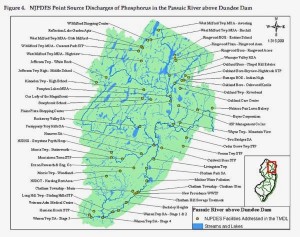 Importantly, the Act also: (per DEP)
Importantly, the Act also: (per DEP)
The CWEA requires the department to submit a report on the implementation of the CWEA’s requirements to the Governor and the Legislature by March 31 of each year. The statute also specifies the items that the department must include in the report. The department has organized the required information into several categories, including Permitting, Enforcement, Delegated Local Agencies, Criminal Actions, Fiscal, and Water Quality Assessment.”
As you can see from DEP’s Clean Water Enforcement Act webpage, the last annual CWEA Report was submitted in 2010.
The CWEA Reports would identify specific toxic water polluters, by corporate name.
Environmental groups would routinely use these Reports for their own Reports and press events that were designed to pressure DEP and corporate polluters to do better.
Obviously, corporate polluters hated that, as did DEP regulators.
No wonder those Reports are down the memory hole.
II) “Doria” Permit Activity Report
The “Doria” “Permit Activity Report” law – named after sponsor and former Assembly Speaker Joe Doria – was enacted during the Florio administration in the early 1990’s largely in response to the business community’s attacks on DEP permit processing delays.
The law requires detailed reporting of all permit, enforcement (e.g. scroll down to see annual air enforcement reports, which haven’t been issued in a decade), and related activities at DEP. (see DEP website)
Here’s an example, from the 2002 DEP Doria Report:
In accordance with the requirements of the Environmental Management Accountability Plan, specifically N.J.S.A. 13:1D-114, this report provides information about the number of permit applications received and processed by DEP programs for the period of July 1, 2002 to December 31, 2002. This report and the previous nineteen reports reflect the department’s commitment to provide access to information to the public, the regulated community, and other levels of government.
That former DEP commitment, to the extent it existed, is totally gone now and no one seems to even know that.
After I blasted DEP, based on Doria Report data that showed that DEP rubber stamped approval of 95% – 99% of all permits, curiously, DEP simply stopped issuing those reports.
No more data sure silences the critics.
But I guess you could say the business community’s strategy backfired: it’s not a good look to show DEP approving 99% of permits, eh?
III) Worker and Community Right To Know Report
I’ll let DEP’s Executive Summary of the last issued 2009 Report explain what this is all about:
New Jersey was one of the first states in the nation to require public reporting of toxic and hazardous chemical storage, or inventory, data and chemical throughput and multi-media environmental release data, and to establish a mechanism to promote public awareness of the information. The first hazardous substances inventory data for New Jersey was collected for reporting year (RY) 1984. The inventory data are reported annually on the Community Right to Know (CRTK) Survey. Chemical throughput, or materials accounting, data were first collected statewide for RY 1987 and are reported on the Release and Pollution Prevention Report (RPPR). This summary report represents a landmark 20th year of materials accounting data reporting by New Jersey industry. Materials accounting includes facility-level chemical throughput, environmental releases, on-site waste management and quantities sent to off-site locations for further waste management or disposal. These data are reported on an annual basis, along with other supporting information about toxic and hazardous chemicals and facility processes. Materials accounting provides a comprehensive, or holistic, view of chemical use and management at a facility for a reporting year.
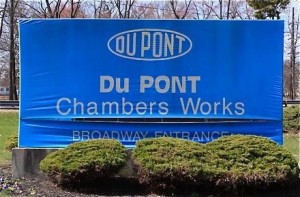 Here’s an example of the kind of information that Report provided – no wonder the corporate polluters killed it:
Here’s an example of the kind of information that Report provided – no wonder the corporate polluters killed it:
DuPont Chambers Works (E I DuPont, Pennsville), ConocoPhillips Refinery (Linden), and Mallinckrodt Baker Inc (Phillipsburg) accounted for the significant increases of note when compared to 2004 data. DuPont Chambers Works’ surface water discharges increased more than 1,161,000 pounds in 2005 and more than 1,230,000 pounds in 2006 compared to 2004. The increase was predominantly due to water dissociable nitrate compounds, sodium nitrite and epichlorohydrin discharges. ConocoPhillips’ surface water discharges increased more than 191,000 pounds in 2005 and more than 396,000 pounds in 2006 compared to 2004. The increase was exclusively due to water dissociable nitrate compounds discharges. Mallinckrodt Baker’s surface water discharges increased nearly 233,000 pounds in 2006 compared to 2004.
Where is that data now?
When was the last time a NJ based environmental group issued a Report and held a press conference blasting these corporate polluters for poisoning NJ?
When was the last news report you read about all this?
Where have you gone, Joe DiMaggio?
IV) Pollution Prevention Report
 The Pollution Prevention Act, passed in early 1990’s during the Florio administration, was a huge step towards forcing corporations to reduce the manufacture and use of toxic chemicals. It required submission of Pollution Prevention plans by individual chemical plants showing how they would do that.
The Pollution Prevention Act, passed in early 1990’s during the Florio administration, was a huge step towards forcing corporations to reduce the manufacture and use of toxic chemicals. It required submission of Pollution Prevention plans by individual chemical plants showing how they would do that.
The law enabled DEP to mandate toxic use reduction requirements in DEP air, water and waste permits, an incredibly strong power DEP never used.
Regardless of DEP’s do nothing appeasement, the Big Corporate polluters correctly perceived this law as an existential threat and they killed it.
Again, I’ll let DEP summarize what this is all about, from their final 2012 Report, issued before the corporate polluters killed the program:
New Jersey’s P2 planning program requires certain facilities to conduct materials accounting on a process and facility level in order to determine areas where hazardous substance use and generation can be reduced or eliminated. The planning process consists of a P2 Plan that remains at the facility; and a P2 Plan Summary and P2 Plan Progress Report, both of which are submitted to the Department.
The information gathered from RPPR data provides insight into annual chemical throughput and use, including environmental releases, waste management practices, and pollution prevention accomplishments. Materials accounting data quantitatively track hazardous substances through a facility’s production processes where pollution prevention opportunities are likely to occur. This is in contrast to the federal Toxic Chemical Release Inventory (TRI – Section 313 of EPCRA). TRI has an end-of-the-pipe focus of pollution control for toxic substances. TRI data provides an inventory of production-related wastes that were managed, including released to the environment, in a calendar year. Some of the waste quantities reported may have actually been generated in the previous year. Materials accounting data provide an added dimension to complete the picture of industrial operations, including how much of the hazardous substances end up in products that are then used by other manufacturers or consumers. This cannot be seen by analyzing other data sets such as the TRI.
I worked on and wrote similar national leading solid waste legislation to mandate “toxics use reduction”, including the Toxic Packaging Reduction Act (1991) and the Dry Cell Battery Management Act (1991). DEP was working on legislation to expand that authority to regulate toxic chemicals in all consumer products until corporate lobbyists convinced the Whitman administration to kill the bill (A973 (Ogden)).
Never heard of those laws or any of that?
[Well don’t feel bad. Neither did the current crop of “environmental leaders”. You can watch them debating (watch 11/15/21 ASW) such earth shattering issues like how many times a refillable bottle needs to be re-used (on the bill S2515) They don’t know that Gov. Florio issued a stricter post consumer recycled context Executive Order 30 years ago, see Florio’s Ex. Order 91 (1993). I worked on that too.
Perhaps even worse, these “environmental leaders” – i.e. Doug O’Malley (Environment NJ), John Weber (Surfrider) and some one from Clean Water Act and Clean Ocean Action – testified on this minutia (and straws on the beach) at the same time that the Senate Committee was hearing a Resolution to impose a moratorium on new fossil infrastructure! None of them even made the effort to testify at that Senate hearing. Now how absurd is that?]
Don’t worry, DEP won’t tell you very much about what those laws are all about and whether they are working as designed.
Those laws too are down the Memory Hole. No data, no reports, no clue.
V) Toxic Catastrophe Prevention Act
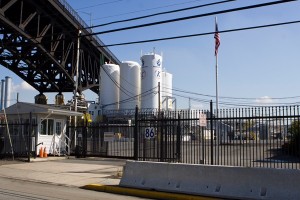 These are the “Bhopal” facilities, were an accident literally could kill thousands of people nearby.
These are the “Bhopal” facilities, were an accident literally could kill thousands of people nearby.
In fact, DEP TCPA regulations require a chemical facility to prepare a map that show’s the “kill zone”.
They hide the “kill zone” behind the Orwellian bureaucratic euphemism “off site consequence analysis“.
Thousands dead is some “consequence”, eh?
Do you live in a “kill zone”? Does you child go to school in a “kill zone”?
Don’t ask DEP – and they won’t tell.
Just go to DEP’s TCPA website and see if you can find out anything. Anything at all about any of that.
Still think this is all about just red tape and bureaucratic paperwork?
VI) Contaminated Sites, polluted groundwater, and remedial cleanup priorities
Is you house near a toxic waste site? How’s DEP doing in cleaning up toxic site in your town? Is your drinking water well threatened by groundwater pollution from a toxic waste site? Should you be sampling your tapwater? Was your child’s school or daycare facility built on an old toxic waste site? Are underground vapors migration into your basement?
Don’t ask. The DEP’s toxic site cleanup program has been privatized.
But don’t worry be happy, DEP has a FAQ on that.
Oh, it’s useless?
But, hey, you can still go to DEP’s website and see what you can find on the dysfunctional “Data Miner”.
Or file an OPRA and see what comes back. Be sure to have the name of site, ID number, lot and block number, etc. Good luck.
VII) Other Important Data and Information No Longer Routinely Distributed To The Public
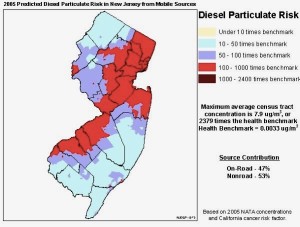 DEP used to make data available and issue reports on everything from hazardous air pollutant levels, drinking water quality (Private Well Testing Act statewide data and Source Water Protection program data), cancer maps, litter cleanups, recycling rates, solid waste generation, pesticide use, changes in land use/land cover, water use, beach water quality, wetlands loss, enforcement fines and penalties, to trends in environmental quality ….. I could go on.
DEP used to make data available and issue reports on everything from hazardous air pollutant levels, drinking water quality (Private Well Testing Act statewide data and Source Water Protection program data), cancer maps, litter cleanups, recycling rates, solid waste generation, pesticide use, changes in land use/land cover, water use, beach water quality, wetlands loss, enforcement fines and penalties, to trends in environmental quality ….. I could go on.
DEP used to regularly update and hold statewide public hearings on important Statewide Plans, like the Solid Waste Management Plan, Sludge Management Plan, Coastal Zone Management Plan, Clean Air Act State Implementation Plan (SIP – ironically now subject to public comment for an important Ozone compliance update you’ll never read about in the news or hear anything about from environmental groups) and more.
DEP even used to issue an annual “State of the Environment” report – with a press release and public distribution of the Report – that tracked trends in key environmental and public health indicators. (DEP now buries that trend data in an obscure website the public has no clue on how to locate or interpret the data.) That Report was terminated by DEP Commissioner Brad Campbell in 2002 in response to propaganda abuses by the Whitman administration, who used the Report as cover for her budget cutting and deregulation at DEP.
They are all gone now. Polluters literally own DEP (an additional report on that coming soon).
The only major Report DEP still issues is the Bi-Annual Dirty Water Report and list of polluted waters. But those reports don’t name corporate polluters or provide any data on how much toxic pollution is being discharged to NJ waterways and drinking water sources (and they ignore groundwater pollution).
DEP only continues to issue this report because it is federally mandated by the Clean Water Act and EPA would revoke DEP’s funding if they failed to issue that Report.
Clean Water Enforcement, Permits, Community Right To Know, & Pollution Prevention Laws Ignored.
No Transparency, No Public Information, No Legislative Oversight, & No accountability.
Hey all you techies out there: find me a Google Maps or App for these data layers, with an accessible analysis about what they mean.
Who will tell the people about all this?
[End Note: So, don’t worry, be happy.
As you and your family are poisoned by polluters and climate and ecosystems collapse, you can take solace in all the earth shaking work that NJ Audubon is doing – while fundraising my email for the billionth time. (BTW, Eileen Murphy, the head of NJA Government Affairs, is the former Director of DEP Science and Research. She knows all this, was the target of gag orders and retaliation by DEP managers, and shamefully keeps it all to herself. And the NJA fundraiser left a few important “successes” out: they didn’t mention their new Exxon minted head of Stewardship and the Highlands logging projects. And the Sparta Mt. golden wing warbler “success” is a flat out lie. NJ Audubon didn’t “measure” that success, they outright fabricated it (just ask them for the documentation supporting that claim – May 2020 after the fact, by DEP):
Thanks to you, New Jersey Audubon can keep doing what we do best:
- We celebrate stewardship each time a landowner makes a conscious choice to manage the land for American Black Duck, Northern Bobwhite, Ruffed Grouse, and other declining wildlife.
- We welcome partnerships that preserve the Delaware River Basin, advocate for the strongest plastics laws in the nation, protect pollinators against toxic pesticides, and serve as a leading voice for responsibly developed offshore wind energy
- We measure success in the presence of Golden-winged Warbler in a patch of young forest habitat at Sparta Mountain, Bog Turtles thriving in the restored wetlands of Salem County, and Black Skimmer chicks fledging on the enhanced dunes at Stone Harbor Point.
- We glance into a healthier, more equitable future when children at a Jersey City middle school are empowered to build a rain garden that resolves their neighborhood drainage concerns.



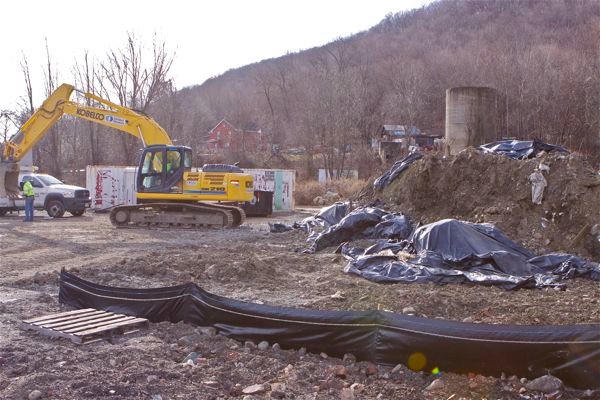
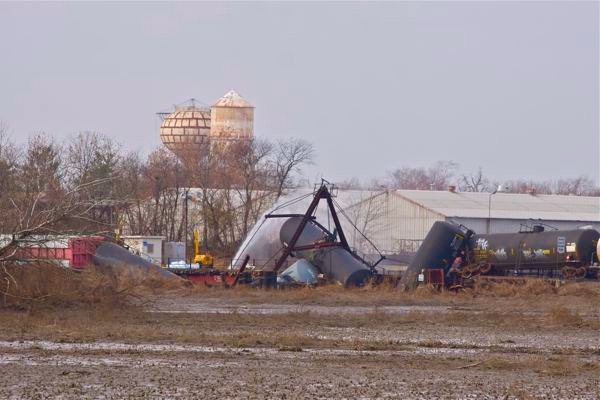
Pingback: WolfeNotes.com » Murphy DEP Flouts Clean Water Enforcement Act And Environmental Management Accountability Act
Pingback: WolfeNotes.com » NJ DEP Has Become A Black Hole And Accountability Free Zone
Pingback: WolfeNotes.com » Passaic Chemical Fire Raises Concerns About DEP Emergency Response
Pingback: WolfeNotes.com » What The People Of Passaic NJ Didn’t Know Almost Killed Them
Pingback: WolfeNotes.com » Blowing Toxic Smoke On Brownfields – What You Don’t Know Can Kill You
Pingback: WolfeNotes.com » What You Don’t Know Can Kill You – Part 56
Pingback: WolfeNotes.com » Meet NJ’s Toxic Top Twenty Corporate Polluters
Pingback: WolfeNotes.com » Another Friendly Reminder From The Murphy DEP
Pingback: WolfeNotes.com » It Is Not “Loopholes” That Allow Development And Pollution To Destroy The Landscape And Water Resources – It’s A Lack Of DEP Enforcement Of Current Laws And Regulations
Pingback: WolfeNotes.com » NJ DEP Doesn’t Do That Anymore
Pingback: WolfeNotes.com » A Shameful Toxic Legacy: From Lodi And Paulsboro, NJ To Palestine, Ohio
Pingback: WolfeNotes.com » Whitewashing The Dismantling Of NJ’s Toxic Chemical Laws